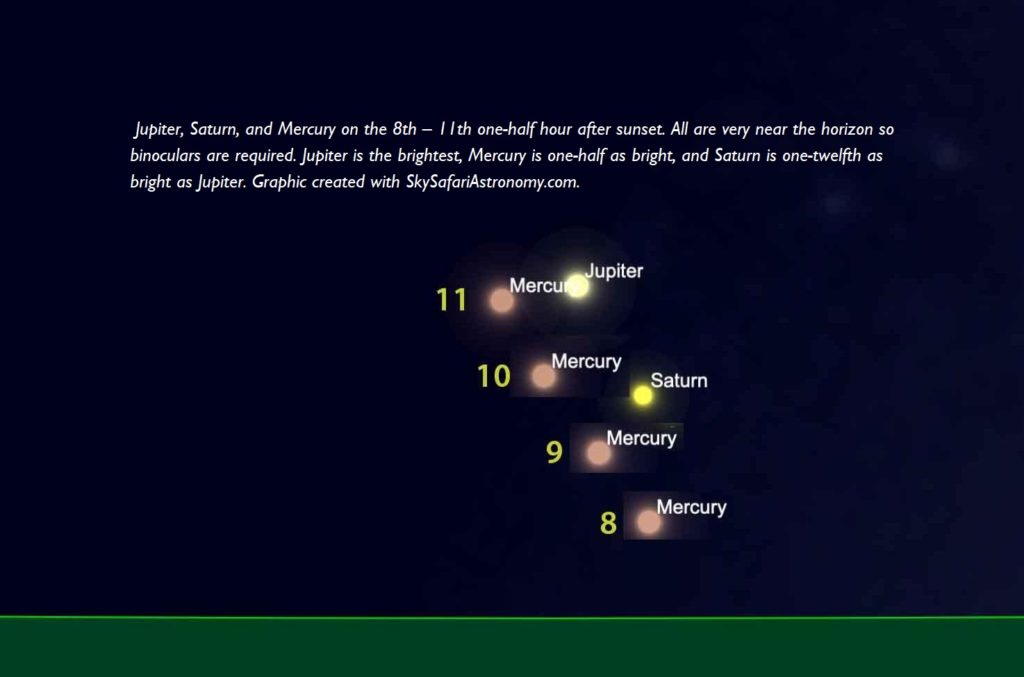Sky Report: January 4 – January 10

This week is your last chance to see Jupiter and Saturn, still unusually close together. They were at their closest on December 21 when Jupiter passed only 1/10° from Saturn. Now Jupiter is pulling away from Saturn but they’re still less than 2° apart. Look for Jupiter a half-hour after sunset very low in the southwest and for much fainter Saturn to the lower right of Jupiter. It will be a challenge to see them and you’ll need both binoculars and a very low horizon, but they won’t be this close again for another 20 years.
To make this grouping more interesting, Mercury joins them for a few days. On the 9th Mercury is less than 3° straight below Jupiter; on the 10th it forms a tight triangle with them, appearing to the lower right of Jupiter; on the 11th Mercury is just 1½° to the left of Jupiter. On these nights all three planets will fit within the view of binoculars. You almost never can see three planets together in binoculars so make an effort to find a place with a low horizon. Mercury remains visible most of January.
We lose Jupiter and Saturn by mid-month They reappear in the morning sky in late February when they will be 8° apart.
That leaves Mars as the sole bright planet in the evening sky. Mars is very high in the south as darkness falls and it sets at around 2 a.m. It has just moved from Pisces into Aries – constellations with no bright stars – so orange Mars sits alone as the brightest object in that part of the sky. We’ll see Mars through July.
Just as Jupiter and Saturn are leaving the evening sky, Venus is leaving the morning sky. In the case of Jupiter and Saturn they’re falling behind the sun as the faster-moving earth moves so as to place the sun between us and those distant planets. In the case of Venus, its quicker orbital motion is taking it ahead in its orbit and around behind the sun. Presently Venus is low in the southeast where it rises about 70 minutes before the sun. Its great brightness lets you see it well into morning twilight and beyond if you know precisely where to look. We’ll finally lose Venus at the end of the month, so these are the last weeks to see it.
Image Credit: SkySafariAstronomy.com
The Sky Report is presented as a public service by the Stellar Vista Observatory, a nonprofit organization based in Kanab, Utah, which provides opportunities for people to observe, appreciate, and comprehend our starry night sky. Additional information is at www.stellarvistaobservatory.org. Send questions and comments to
John@StargazingAdventures.org.






Comments are closed.